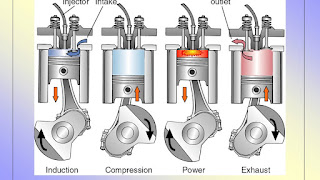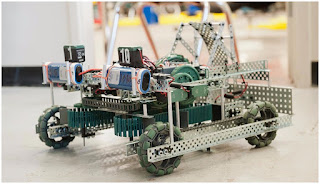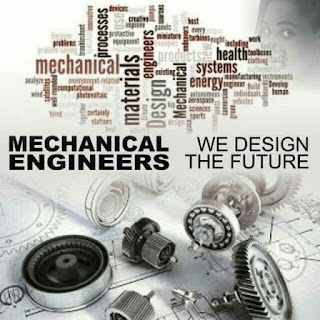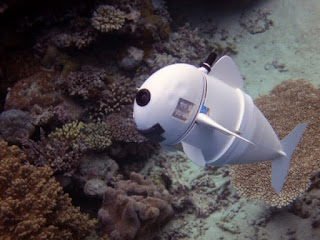16 EARLY INNOVATIONS THAT BIRTH THE MECHANICS OF TODAY
Mechanical engineering is a very wide discipline that, effectively, covers anything that moves. Its breadth is due, in part, from its need to cover the design and manufacture of anything and everything in a moving system.
This ranges from a system's smallest components to the completed, sometimes enormous, machine as a whole. Throughout history some innovations have come to define mechanics as we know it today, the following are no exception.
These engineering innovations range from the any one of the classical 'simple machine' to complex concepts such as flight. This list is far from exhaustive and in no particular order.
1. The Aeolipile Was an Early Steam Reaction Turbine
The Aeolipile was the world's first rotating steam engine or more technically correct, a steam reaction turbine. It was devised by the great Heron of Alexandria in the 1st Century AD and described it in great detail in his book Pneumatica.
This relatively simple device works by heating a reservoir of water within the device to generating steam. The steam is then conducted through one of the copper supports to a pivoted brass sphere.
Once the steam reaches the sphere it escapes through one of two nozzles at the ends of two, small, opposingly pointing arms. The escaping steam generates thrust and causes the sphere to rotate.
The basic principle is simple but the device’s real genius is its bearings. Only one of the supported arms pass steam to the sphere (via a sleeve bearing).
This pushes the sphere against the other supporting ‘solid’ arm that also has a thrust bearing. The solid arm comprises of a conical point that bears against a matching indentation on the surface of the sphere. This combination holds the sphere in place whilst it rotates.

2. Wheel and Axle - The Powerful Simple Machine
There are very few innovations in mechanical engineering that have had as much influence as the wheel. The modern world would look very different without them.
Wheels, technically the wheel and axle is one of the six simple machines as defined in antiquity and expanded during the Renaissance.
The first depictions of wheeled-vehicles appear on an earthenware Bronocice pot from Poland and dates to around 4000 BC. The pot clearly depicts a wagon of some kind with four wheels set on two axles.
The earliest actual evidence of a physical wheel-axle combination comes from Slovenia and is dated to around 3360-3030 BC.
Wheels literally changed the world and have been a constant feature of human transport devices the world over.

3. Windmills
Windmills are incredibly ingenious devices that are able to convert wind power into useful mechanical work. This is achieved by using large ‘sails’, usually made of wood, imparts rotational force to the main shaft that in turn can be used to power a process, like grinding flour.
The Persians were some of the first people to harness the power of wind when they began building early forms of windmills in Iran and Afghanistan in around the 7th Century AD.
These early windmills consisted of sails radiating from a vertical axis within a building with two large openings for the inlet and outlet of wind diametrically opposite each other. The mills were used to directly drive single pairs of millstones without the use of gears.
They were one of the first means by which civilizations were able to directly replace human beings as the main source of power for a process.
Windmills would become increasingly widespread throughout Europe during the Middle Ages and stayed in use well into the 19th Century.
The development of steam power during the industrial revolution would spark the eventual decline of windmills.

4. Pulleys
Pulleys are one, or several wheels, on an axle or shaft that support the movement and a change of direction of a cable or belt (that is usually taut). They transfer power between the shaft and cable and provide an immense mechanical advantage for providing large forces ideal for lifting heavy objects.
Pulleys come in various types:-
- A fixed pulley has an axle mounted in bearings attached to a supporting structure
- Movable pulleys have axles mounted on movable blocks.
- Compound pulleys are a mixture of the above two. The perfect example is the block and tackle pulley system.
The pulley was identified by the great Heron of Alexandria as one of the six simple machines. Today pulleys are an integral part of many mechanical systems including fan belts, flag poles, and water wells.

5. Man's Obsession with Flight Shrunk the World
Long before the Wright Brothers were even born, man has been trying to take to the air. One such lesser-known flight pioneer was Brother Eilmer. Eilmer was a monk from Malmesbury Abbey, England when he made an early attempt at flying in 1010 AD.
An account of the event can still be found in William of Malmesbury’s book Gesta Regum Angloru
It is said that he was inspired by the legend of Icarus to build a basic glider and attempt to fly. His glider was built from a wooden frame and either linen or parchment.
He would later launch himself from about 18 meters above ground level, glided 200 meters and subsequently panicked and crashed, breaking both his legs.
He returned to the drawing board and planned his next flight only to halted by an embargo from his Abbot to stop any further attempts.
Brother Eilmer’s desire to fly, and others that followed him, like the Ottoman Celebi to the great Leonardo da Vinci, would drive our understanding of flight and aerodynamics.
6. Steel
Steel has been known about since the beginning of the Iron Age. But for most of this time, the quality of iron produced varied widely.
The first blast furnaces began appearing in China in around the 6th Century BC and would spread into Europe during the Middle Ages. By the 17th Century iron was, more or less, well understood and by the 19th Century production methods and quality were improved dramatically.
Early metallurgists realized that when iron gets very hot it begins to absorb carbon. This, in turn, reduces the melting point of iron as a whole and makes the final product brittle.
They soon realized that they needed to find a way of removing high carbon contents to make iron products less brittle.
In around 1050 AD the precursor to the modern Bessemer Process is developed. This process decarbonized the metal through repeated forging under a cold blast.
Although this process was far less efficient that Bessemer’s later development it would form one critical stage in the development of our knowledge of the metallurgy of iron and steel.
The most important development was made by Henry Bessemer in 1856. He managed to find a way of using oxygen to reduce the carbon content in steel, thus creating the modern steel industry.
7. Sailed Ships Opened Up the Oceans
The very first depiction of a sailed ship dates back to around 3300 BC in an Egyptian painting. These early boats featured a square sail as well as banks of oars.
As they were confined to the Nile River and depended on winds within the narrow channel it was vital to retain oars during times of insufficient wind speed.
This combination dominated early ships for centuries reaching heights in technological advancements with the triremes of the classical period.
The first sails were probably made of animal skins but these were replaced by woven reed mats and eventually cloth in predynastic Egypt.
Later, sails were made of woven flax fiber in Europe which is still used today though cotton has largely replaced it.
Sailed ships would enable mass exploration of the seas and open up new trade routes. They would, in effect, shrink the world and allow previously disconnect nations to exchange goods and knowledge.
They would also enable nations to expand their influence around the world and, in some cases, become the workhorses of empire.
Incentives like these would further drive advancement in ship technology and mechanical engineering to the present day.

8. The Printing Press
The printing press was one of the most important inventions for mechanical engineering and the population at large. Johannes Gutenberg’s machine was groundbreaking in its own time and set the stage for enormous advancements made during the Renaissance and Industrial Revolution.
Movable type printing had been around for some time before Gutenberg, notably in China, but his device was the first to mechanize the process of applying text and images to paper en masse.
Gutenberg’s press was modeled on the ancient wine presses of the Mediterranean and in fact, was made from a modified wine press. It was also developed on the existing presses of the medieval period.
His press worked by rolling ink over a pre-arranged raised surface of movable text held within a wooden frame. This was then pressed against a sheet of paper to create a copy.
This process was vastly more efficient than other presses of the time not to mention the previous process of hand copying books.
The press would allow books to be produced more quickly, and, most importantly, cheaper, enabling more and more people to afford to buy them. This would mark a watershed in human and engineering history.

9. The Piston
The invention of the piston is widely credited to French physicist, Denis Papin in 1690 AD. His design for a steam piston engine was built upon by later inventors like Thomas Newcomen and James Watt during the 18th Century.
Its invention, along with other advancements in steam engine technology, would mark the ‘true’ beginning of the industrial revolution.
Pistons tend to be contained within a cylinder that is made air-tight by use of piston rings. In modern engines, the piston serves to transfer force from expanding gas in the cylinder into reciprocating motion on a crankshaft.
This process is effectively reversed when applied to pumps.
Today pistons are essential components in many reciprocating engines, pumps, compressors and other similar devices.

10. Levers Give You Mechanical Advantage
"Give me a place to stand, and I shall move the Earth with it' is a remark of Archimedes who formally stated the correct mathematical principle of levers" - Pappus of Alexandria.
The lever, yet another simple engine, consists of a beam (or rigid rod) pivoted on a fixed hinge or fulcrum. Levers are incredibly useful devices that can be used to provide mechanical advantage to move very heavy objects with relatively little effort, otherwise known as leverage.
Depending on where the fulcrum is located as well as the load and effort, levers can be divided into three types:-
- Class 1 levers are those where the fulcrum is located in the center of the beam. Examples include a seesaw or a crowbar.
- Class 2 levers are those where the load (resistance) is located in the middle. Examples include a wheelbarrow or brake pedal.
- Class 3 levers are those where the effort is located in the middle. Examples include tweezers or even your own jaw.
Levers are first identified in the works of Archimedes in the 3rd Century BC,

11. The Locomotive Revolutionized Transportation Forever
Richard Trevithick, in 1801-1804 built both the first steam carriage and an experimental steam locomotive in Pen-y-Darren, Wales, UK. He later sold the patent and in 1804 revised his original version to successfully carry 10 tons of iron, 5 wagons, 70 men for about 10 miles.
This trip took just over 4 hours meaning his locomotive clocked up an eye-watering 2.4 miles per hour. This made it the very first steam locomotive to produce actual practical work.
The locomotive would go on to literally transform the face of industry and transportation the world over.

12. Inclined Planes or Ramps Make Lifting Easier
The humble yet immensely important ramp, or inclined plane, is another of the fundamental six simple machines that allows heavy loads to be moved vertically with relatively little effort. They are widely used in many applications from loading goods into trucks to disabled access ramps.
Moving an object up an inclined plane requires less force than lifting it straight up at a cost of an increase in the distance moved. The mechanical advantage for ramps is equal to the ratio of the length of the sloped surface to the height it rises.
The screw and wedge are other simple machines that can be considered variations on the inclined plane or ramp rather than discrete forms.

13. Gears and Cogwheels Transmit Torque With Ease
Gears or cogwheels are integral components of any rotating machine that allow for the change in speed, torque or direction of any power source. They are one of the fundamental mechanical engineering innovations in history.
Any change in torque with the use of gears and cogwheels necessarily creates a mechanical advantage thanks to the phenomenon of the gear ratio.
A gear can mesh with a linear toothed part, called a rack, producing translation instead of rotation.
It is unclear exactly when gears and cogwheels were first invented but some credit Archimedes. Today, gears are present in many moving systems and machines from bicycles to ship engines.

14. The Bearing Helps Reduce Friction
The bearing is another fundamental machine element that has come to define mechanical engineering. These devices allow the constraint of relative motion in one direction or plane whilst simultaneously reducing friction between moving parts.
Bearings come in many shapes and sizes and range from components holding shafts or axles in place (plain bearing) to more complex systems like ball bearings.
Modern-day sophisticated bearings often demand the highest level of precision and quality in manufacturing.
15. The Wedge Is Great For Breaking Things
The wedge is another simple machine and fundamental innovation in mechanical engineering. They have been used since prehistorical times for activities like splitting logs (axes) or rocks (chisels).
Wedges are defined as movable inclined planes that can be used to separate two objects (or portions thereof), lifting objects or holding them in place via the application of force to the wide end. The wedge's shape, therefore, converts one input force into perpendicular forces 90 degrees to the inclined surfaces.
The mechanical advantage achieved by any wedge is dependent on the ratio of its length to thickness. In other words wide, short wedges require more force but produce a quicker result than a long, low angled wedge.

16. Electrical Motors Convert Electricity Into Motion
Motors are electronic machines that convert AC or DC electrical current into rotational movement. Most common electrical motors work through the interaction of a magnetic field and winding currents to generate a force.
The basic principle behind electric motors, Ampere's Force Law, was first described by Ampere in 1820 and was first demonstrated by Michael Faraday in 1821. One of the first practical motors was created by Hungarian physicist, Anyos Jedlik in 1828.
Motors are found in many applications around the world from industrial fans to power tools to computer disk drive.









Comments
Post a Comment